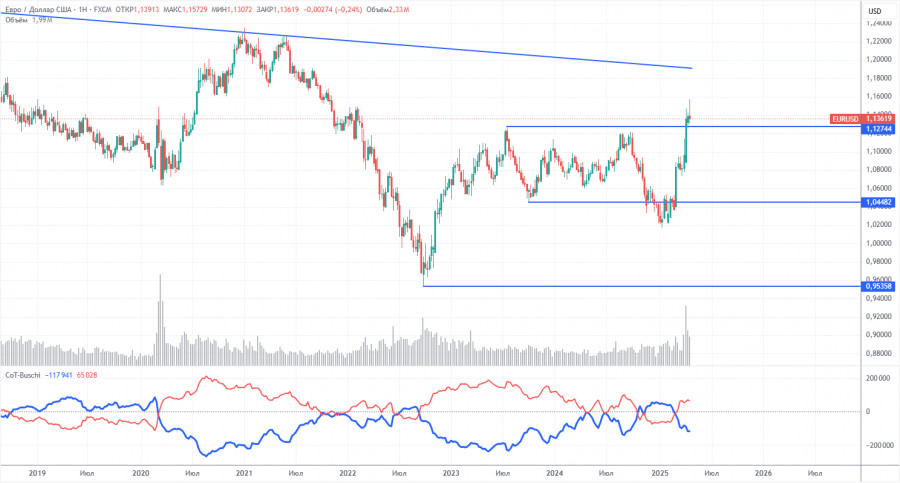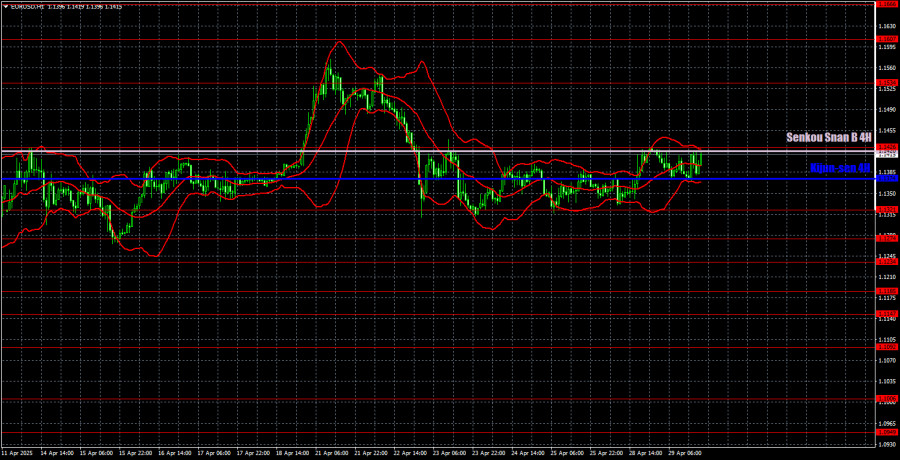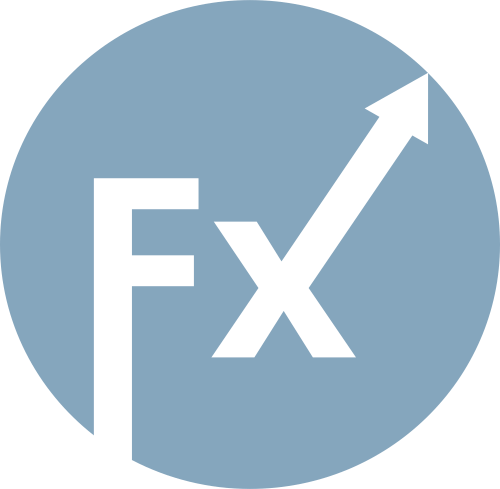The EUR/USD currency pair continued to trade within a sideways channel throughout Tuesday. The flat movement is visible in the chart above. Last week, the pair briefly broke out of the range, only to quickly return to it. That was when Trump was "firing and reinstating Powell" — of course, that's sarcasm. In reality, Trump had considered firing Powell, then changed his mind. These headlines initially triggered a dollar sell-off, followed by a rebound, although they held no real value for the market.
As for Tuesday, the only somewhat noteworthy report — the JOLTS job openings — failed to elicit any reaction from traders, as we had warned. The market now reacts either to Trump's news related to the trade war or the Federal Reserve and monetary policy — or it prefers not to trade. As a result, there was practically nothing to analyze on Tuesday. Trump made no significant new statements, the macroeconomic backdrop was predictably ignored, and the technical picture remained unchanged.
On the 5-minute timeframe, the pair ignored the 1.1391 level all day, which was eventually removed from the charts. The price bounced off the critical line several times, but in none of those attempts did it drop more than 30 pips. Volatility was low, and the pair remained within the sideways range — a telling sign.

As shown in the chart above, the net position of non-commercial traders remained bullish for a long time. The bears barely managed to move into dominance but quickly lost it. Since Trump took office as U.S. President, the dollar has fallen into an abyss.
We cannot definitively say that the decline of the American currency will continue, and the COT reports reflect the true sentiment of major players, which can also change very quickly in the current circumstances.
We still do not see any fundamental factors for strengthening the European currency, but one very significant factor remains for the fall of the U.S. dollar. The pair may correct for a few more weeks or months, but a 16-year downtrend won't be reversed so quickly.
The red and blue lines have crossed again, so the trend in the market is now bullish once more. Over the last reporting week, the number of longs from the "Non-commercial" group decreased by 900, and the number of shorts increased by 3,300. Accordingly, the net position decreased by 4,200 contracts.

On the hourly timeframe, EUR/USD maintains a bullish bias but has been flat for several weeks due to a lack of news regarding Trump's trade conflicts. On the daily timeframe, we can officially declare that the downtrend has been canceled — something that would never have happened if Trump hadn't started a trade war with the rest of the world. In this case, the fundamental backdrop disrupted the technical picture — a rare but not impossible event. There is currently very little logic or technical consistency in price movements across timeframes, and the macroeconomic backdrop has no meaningful influence on the pair.
For April 30, we highlight the following trading levels: 1.0823, 1.0886, 1.0949, 1.1006, 1.1092, 1.1147, 1.1185, 1.1234, 1.1274, 1.1321, 1.1426, 1.1534, 1.1607, 1.1666, as well as the Senkou Span B line (1.1420) and the Kijun-sen line (1.1374). Ichimoku indicator lines may shift throughout the day, so this should be considered when identifying trade signals. Don't forget to place your Stop Loss at breakeven once the price moves 15 pips in your favor. This will protect against potential losses if the signal turns out to be false.
On Wednesday, significant important data is scheduled for release in the Eurozone. In particular, we expect Germany's Retail Sales, Unemployment, GDP, Eurozone GDP, and Germany's inflation data. In the U.S., we expect reports on GDP, ADP employment, and the Core PCE Price Index. However, despite this abundance of macroeconomic data, we strongly doubt that traders will pay much attention to it.

LINKS RÁPIDOS